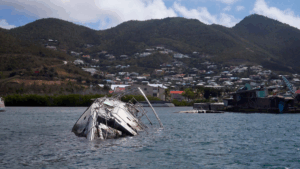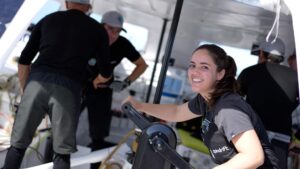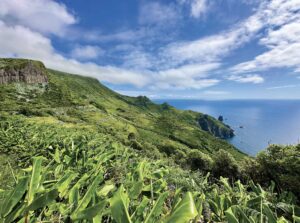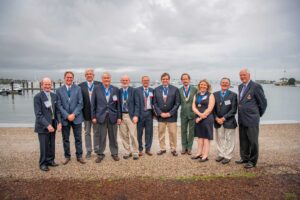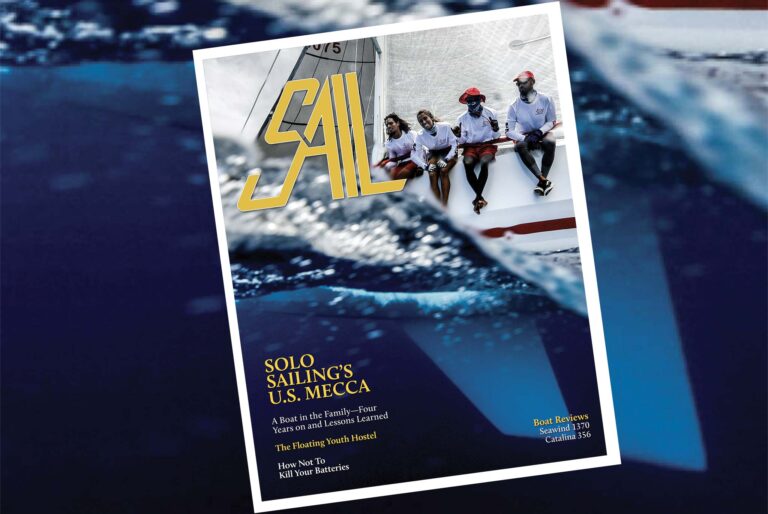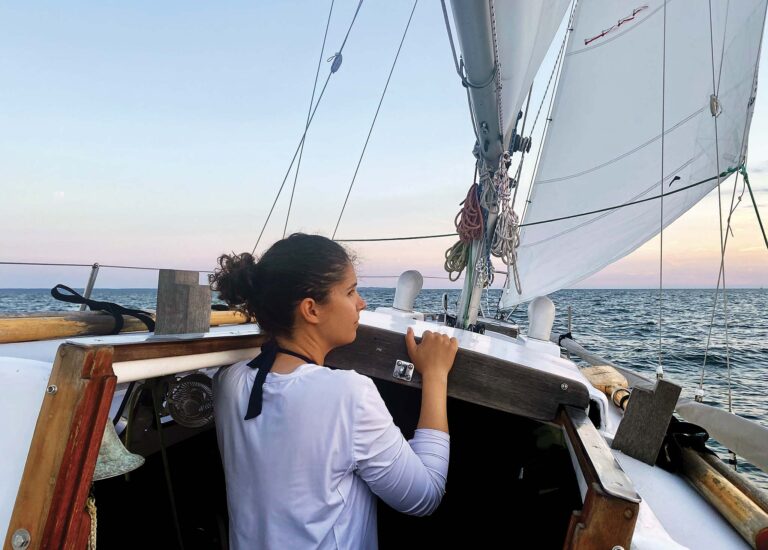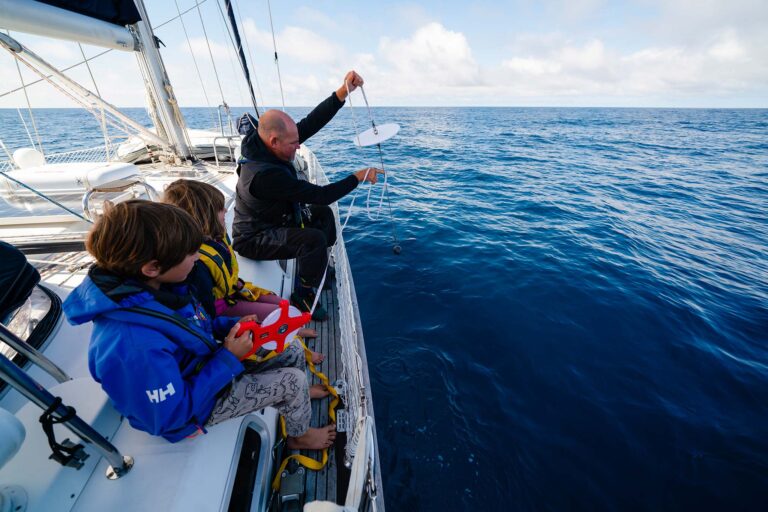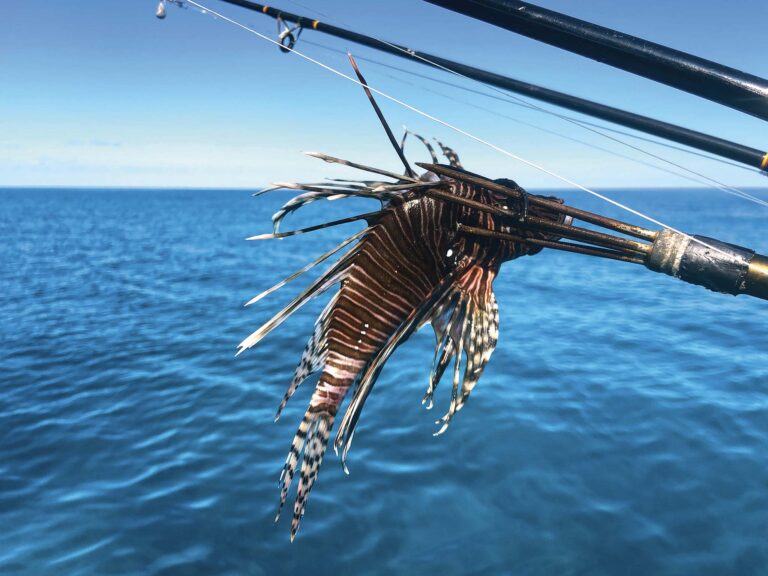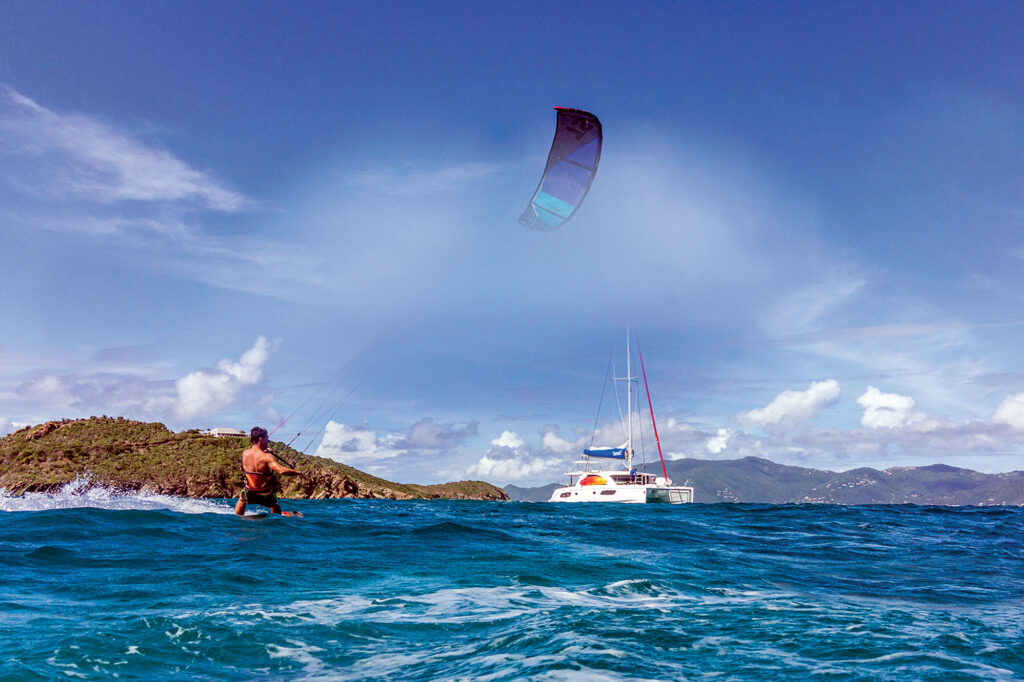 Photo courtesy of Sunsail
Photo courtesy of SunsailIt all started with YouTube. Last year, when my wife, Marjorie, and I began planning to include the Exumas in our upcoming three-month cruise through the Bahamas, I searched the internet for information on what we might find there. As I was doing so I happened across a video of a French group kiteboarding at Moriah Harbor Cay, near Georgetown, Exuma. The thought of being in such a beautiful place and doing such an exciting thing immediately sucked me in. I suddenly found myself doing more research on kiteboarding than on actually cruising.
One thing seemed immediately clear: kiteboarding can be a great fit for a cruising sailor, as the required gear packs down well. The only large, rigid item is the board, and with most boards being only a little over 5ft long, it’s not hard to find a place for one aboard most cruising boats. You’ll need a kite, of course, although you might prefer to have two or three. Kites generally come in their own carry bag, which doubles as a backpack and, depending on the size of the kite, takes up the same room as a medium to medium-large backpack.
With no rigid parts, they can also be squeezed into odd shapes in a locker or lazarette. The rest of the required equipment includes a control bar with lines, a harness and a pump, none of which are particularly large. The pump can do double-duty pumping up paddleboards, inflatable kayaks or your dinghy.
Within a couple of days, having spent an embarrassing amount of time on the internet, I decided I was serious about learning to kiteboard. However, I only had a few weeks before Marjorie and I were due to make the passage across the Gulf Stream.
At 53, I am neither an athlete in great condition nor a person who struggles with physical activity. However, I am also old enough to have already given up a few high-risk activities, and I initially had some concerns about getting far enough up the learning curve to feel that I could be self-sufficient and enjoy kiteboarding in remote locales.
Marjorie had planned to spend the week and a half prior to our departure with her mother, and I had planned to spend the time aboard Meri, our Tartan 4100, doing some necessary boat maintenance. Nonetheless, I decided I could still squeeze in a few lessons as well. We had left Meri in Hobe Sound, Florida in November, after sailing down from the Chesapeake, and fortunately, there are several kiteboarding schools to choose from in the areas near Stuart and Jupiter, Florida.
I booked four half-day lessons with Next Level Watersports in Stuart, which turned out to be a great decision. Company owner Jon Beery and his accomplished instructors were amazing in the ways in which they worked with me to meet my goals, which included 1) reaching a point where I was comfortable enough with my abilities to invest in my own equipment and 2) reach a point where Jon was comfortable with the idea of me sailing off to the Bahamas and kiteboarding safely with little or no support. Jon told me that while my goals were aggressive, they were not unreasonable given the amount of instruction I had committed to.
I found Next Level’s methods and instructors to be top-notch. The company provides instruction at several massive sandbars in the Indian River, a great spot to learn due to its shallow depth and light chop. Students and gear are taken to the sandbar aboard a center-console boat and each student is paired with an instructor in a dinghy. The sandbar provides a large area of shallow water that is helpful in letting you learn to handle the kite without constantly being pulled downwind—as you would be in deeper water—or dragged across a beach after getting overpowered ashore.
As a beginner, the dinghy also improves the experience since your instructor can chase you around the water as you inevitably work your way downwind or in other random directions. They simply hoist you and your kite into the dinghy (with still flying the kite!) and quickly motor you several hundred yards back upwind. Waterproof two-way radio headsets allow you and your instructor to remain in constant communication, except for those embarrassing moments when your head is underwater.
 Photo courtesy of Doug Weibel
Photo courtesy of Doug WeibelI especially appreciated the fact that the instructors tailored their lessons to include techniques like how to rig and launch a kite from a boat when no beach is available. That’s a skill which is not normally taught to beginners, but very useful to a cruising sailor.
Passion and helpfulness have long been hallmarks of the kiteboarding community, and in particular, of the sailors/kiteboarders, I met over the winter. I was excited to find a free flow of helpful information about which locations worked best given different wind directions, tides and currents. Several times, when discussing cruising plans, other kiteboarders told me who I might find in that area, at the same time inviting me to look them up for local information when I got there. This kind of instant camaraderie fits right in with our cruising style. You don’t need to go knocking on hulls to invite other cruisers over for sundowners if you’ve already met them on the beach while kiteboarding!
One day on Tahiti Beach, when all my lessons and practice came together for a near-perfect day on the water, I not only met several other kiteboarders, but made an instant connection with Anne and John from Seahorse and David from Second Wind. We were all relative beginners and had a great time avoiding each other on the water—well, all but one time when Anne and I tangled kite lines while cruising cross-wind legs a ways out from the beach. My next big milestone—and Anne’s as well—will be learning how to consistently ride upwind.
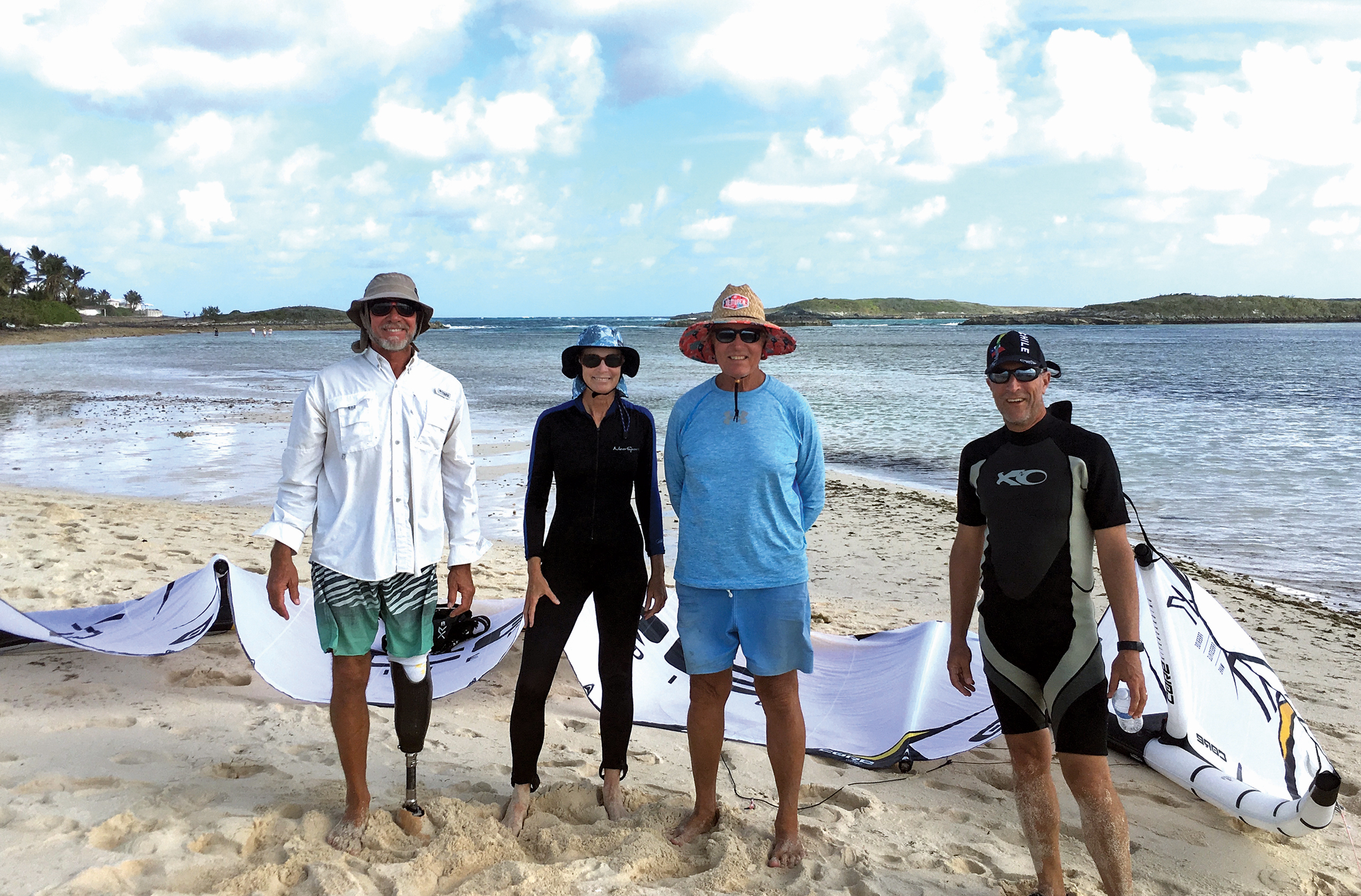 Photo courtesy of Doug Weibel
Photo courtesy of Doug WeibelLater, after arriving in the Georgetown area, I asked over the morning radio net for any other kiteboarders in the area to get in touch with me and was disappointed to not hear from anyone. That same afternoon, though, my wife and I went to a meet-and-greet at Sand Dollar Beach, and after a while someone named Ben rushed up and asked, “Are you Doug from Meri? I’ve been trying to get in touch with you.” Ben then introduced me to two other kiteboarders, and our conversation immediately transitioned to the wind forecast.
As fate would have it, 15 to 20-knot winds were predicted for a few days later, and Ben, Michael and Chris thought the riding would be great at Moriah Harbor national park, about 5 miles south. Michael offered to take everyone on his catamaran, Escapade, relieving me of the worry of taking my own boat and having to figure out the tricky approach to the best spot.
Come Thursday, we ended up taking no less than nine riders with us on Escapade and riding off the sandbars to the west of Man-O-War Cay. The location was stunning, with myriad shades of blue water and sugar-fine white sand. Riders that day ranged in age from their early 50s to their mid-70s, and in ability from beginners to sailor named Rob, who, with over 20 years experience, thrilled us with his big-air jumps and other fancy tricks. What an incredible escapade!
While it is fun to watch great riders and I dream of one day being able to ride with confidence and do tricks as well, I am also having a wonderful time being a beginner. I’m thankful that I had the gear onboard to take advantage of those beautiful Bahamian beaches, and the opportunity to meet so many wonderful people out doing something they love.
Doug Weibel and Marjorie are back on the Chesapeake Bay
July 2019

